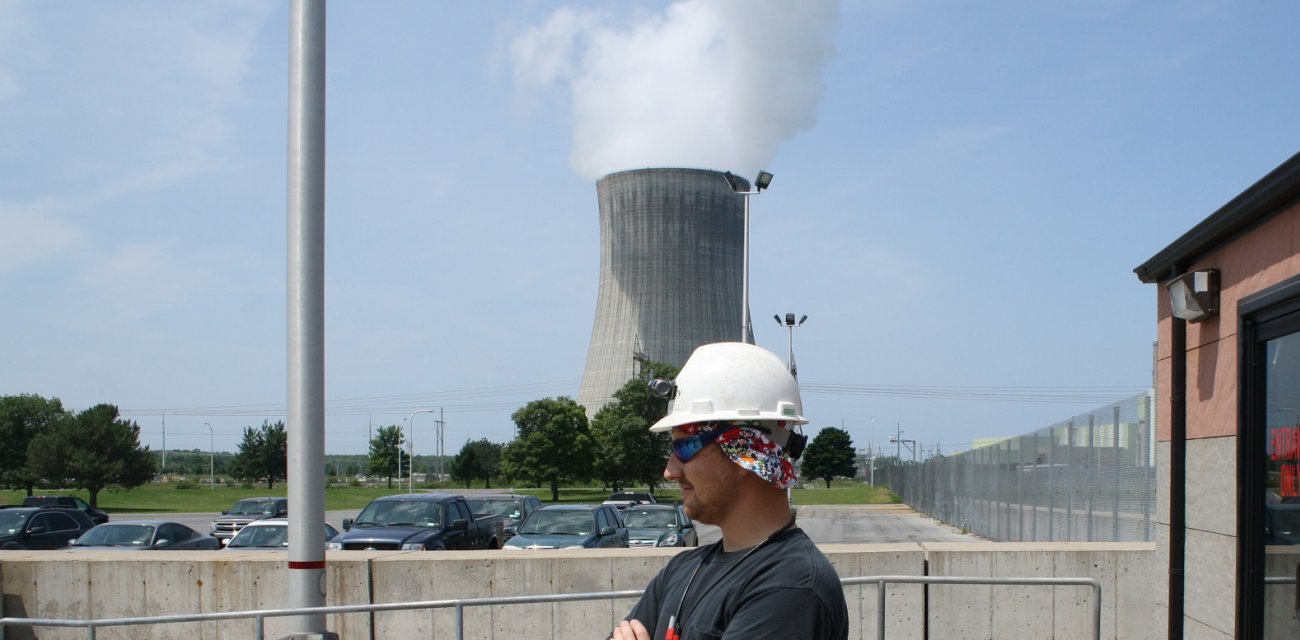This story first appeared on syracuse.com, written by Frank Knauss.
SYRACUSE, N.Y. – The four nuclear power reactors in Upstate New York, including three in Oswego County, are responsible for $3 billion in economic activity and nearly 25,000 jobs, according to a consultant's report paid for by nuclear operator Exelon Corp. and three unions fighting to keep the Upstate plants alive.
The report is unlikely to prevent Entergy Corp.'s shutdown of the FitzPatrick nuclear plant in Oswego County roughly a year from now. But it might bolster support for Gov. Andrew Cuomo's plan to support the other three Upstate reactors with new payments tied to the carbon-free benefits of nuclear power. Exelon is a strong supporter of Cuomo's plan, which is due to be finalized in June.
The four Upstate reactors – two at the Nine Mile Point generating station, and one each at FitzPatrick and the Ginna power plant near Rochester – provide significant economic and environmental benefits that should be considered in setting future state energy policy, according to the report released today by The Brattle Group, an international consulting firm.
If all four reactors were replaced with power plants that burn fossil fuels – mainly natural gas – the result would be 16 million tons of added carbon dioxide emissions annually, in addition to extra emissions of sulfur dioxide, nitrogen oxides, and other air pollutants, Brattle concluded.
The report's analysis of the economic role played by nuclear plants will strike a chord in Oswego County, where residents and elected officials are bracing for the shutdown of FitzPatrick and the resulting loss of 615 high-paying jobs and millions of dollars in property taxes. According to previous studies at similar nuclear plants in Vermont and Wisconsin, shutting down FitzPatrick could remove $500 million or more from the local economy.
The Brattle Group suggests the impact could be even larger, although the report did not analyze the specific effects of closing FitzPatrick. Instead, the consultants looked at the impact of closing all the Upstate nukes. As a group, the nuclear plants support 24,800 jobs and $3.16 billion in gross domestic product, after accounting for secondary effects of their operation, according to economists Dean Murphy and Mark Berkman, authors of the report.
There are 2,305 employees at the Upstate nuclear plants, Brattle reported. In addition, the outside workers who come for refueling outages every two years account for the equivalent of 352 full-time jobs, the study said.
But most of the economic activity attributed to the nuclear plants is indirect, the result of services acquired by the plants, spending by their employees and – most of all – power prices that are lower than they would be without the nuclear plants. New York state electricity prices would be $1.7 billion a year higher if the Upstate nuclear plants were replaced with power plants burning natural gas and coal, according to Brattle.
That might sound counter-intuitive to anyone who has followed the Upstate nuclear industry, where plant operators complain that they can't compete with low-priced electricity from power plants fueled with natural gas. But removing Upstate nuclear power would cut the state's power supply by 15 percent, Brattle reported, requiring more electricity to be supplied by power plants that seldom run now unless prices are high.
Here's the basic argument: Even though nuclear plants are struggling to meet their fixed costs, they always run so they accept whatever hourly price the market pays, Murphy said. Removing the Upstate nuclear plants from service would raise power prices because it would force grid operators to call more frequently on gas- or coal-fired plants that have higher operating costs, he said.
The Brattle Group study does not address the potential impact on electric prices if the state were to adopt new price supports for carbon-free power to boost nuclear revenues and help the plants survive financially.
FitzPatrick is scheduled to close by early 2017. The Ginna plant near Rochester is being supported by subsidy payments that expire in March 2017. The two nuclear reactors at Nine Mile Point nuclear station also face challenges but are in better financial health because of higher efficiency, industry experts say.
The Brattle Group report was commissioned by Exelon, which owns Ginna and Nine Mile Point; the New York State IBEW Utility Labor Council; the Rochester Building & Construction Trades Council; and the Central and Northern New York Building & Construction Trades Council.
"The Brattle report confirms what we already know -- nuclear energy is an economic engine and jobs provider for Upstate New York," said Ted Skerpon, chairman of the New York State IBEW Utility Labor Council. Skerpon is also president of IBEW Local 97, which represents workers at FitzPatrick and Nine Mile Point.
Brattle produced a similar study in July looking at the U.S. nuclear industry as a whole.
Read the full report here.

